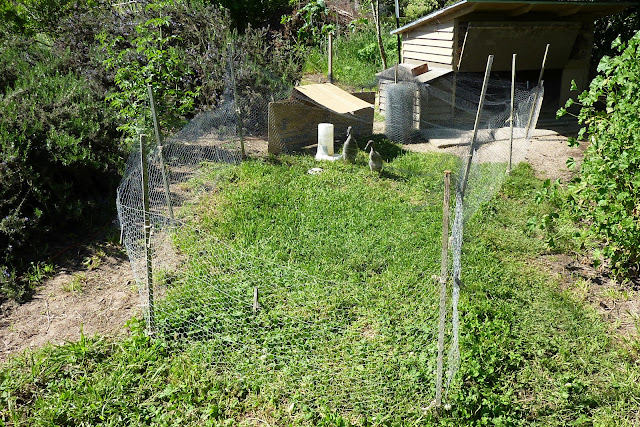 |
| Balance Higher State Enneagram stone for Type 4 |
Or equanimity, the preferential word my friend Courtney uses for this higher state we here at MuRefuge are in tune with since Rose's joining the Eternal Tao.
I am realizing my depth of commitment to Rose’s process the longer she is absent from our lives here at MuRefuge. Seeing the world, or wearing the lens through which she viewed the world, from Rose’s perspective provided me with an unique opportunity to experience the wild. Those that inhabit the wilderness seem to have a very different order which is rarely muddied with emotional baggage. The pack’s well being is valued. Death is accepted. Rose’s Work was to merge these traits with living in a world where humans are “top dog”. Rose died with her Work complete and rightfully pleased with her hard work. And I am in the midst of the dynamic process, balance aka equanimity.
Now we have a dog, well puppy really, that clearly understands and accepts that humans are in control. She is sweet so I call her “Sugar Plum” (Dwight calls her "Twinkle Toes" since is prances when when she takes walks with us) and she seems to naturally assume equanimity puncuated with bouts of rowdyness.
When she is clear what we want from her, she gives it to us readily. Easy is this Shasta.
BEing with Rose’s process intensely the last six months of her life left much undone or uncompleted. Blog entries have been scarce at best. So as we here at MuRefuge become more balanced, I would like to share some other events we have experienced.
I have never seen any offspring from the pair of foxes I have seen gamboling in the field to our South.
 |
| The resident pair of foxes |
One morning, while I was sitting, this past Spring I saw something, well a few somethings, jumping in the tall grass. Binoculars revealed offspring for this year, not one or two but five.
 |
| Mom with her youngsters |
We were fortunate to watch them grow up, exchanging stories of amazement with our neighbors Pete and Dana who viewed the same kits in another nearby field.
Also, in the Spring we added to our small egg producing, snail and slug eating duck flock. Last year two chocolate female Indian Runners were added with one of those no longer at MuRefuge. This year two blue ones came from Metzer Hatchery.
And now we have a resident cat, Jack, who has his very own house to protect his food bowl from the coming rains, hopefully.
 |
| Jack's house with feeding bowl in evidence |
The beautiful pottery food bowl was made by none other than Dwight. Jack came uninvited to MuRefuge, and the ducks were stirred up upon his arrival since he liked to hang out in their duck house, but now interspecies harmony prevails with both Jack and ducks coming together at the water bowls when we fill them with fresh water.
In addition to the massive clearing done this past Spring I have been focused on removing more nonnatives which has opened small patches to be replanted. My focus has moved from individual plants and their preferred habitat to plant communities. In that vein I have planted one area with Coyote Mint and Cobweb Thistle, another with Beach Asters and Coast Buckwheat. I noticed while ambling with my friend Anne on the Olympic Peninsula that beneath the Ocean Spray grows Salal and the Pearly Everlasting so I experimenting with that combination. Traditionally rain falls in the Northwest so perhaps such a plant community may not thrive here.
Since the nonnative Curly Willow blew over in a storm now almost two years ago, many of shade loving plants planted to enjoy the protection from the midday sun beneath the willow’s boughs have struggled. Most are being moved to more appropriate homes.
In spite of the less than normal rainfall this past rainy season, most of the natives seem to be only dormant waiting for the rains to arrive. The state of each plant will not be know until rains arrive, cold temperatures pass, and the warmth of Spring comes again.
Abundance of delicious, ripe grapes has been a novelty this Fall.
Each year fruit trees, berry bushes and other plants provide differently. This particular season we have many apples: Pink Pearl, Yellow Pippin which is George Washington's favorite apple and Spitzenberg.
 |
| Ripe Heirloom Spitzenberg apples, Thomas Jefferson's favorite apple |
The varying abundant production reminds all of us here at MuRefuge that balance is NOT static but rather a dynamic process of which Courtney was aware and suggested this higher state design for equanimity. To her this design more accurately described the ever tilting side to side as she was negotiating every day life then with conscious awareness choosing to rest in Center. Ah-h-h-h the Higher State within; always present, available at any moment.
 |
| Equanimity Higher State Enneagram stone forType 4 |
Eckhart Tolle and Patrick McDonnell, the creator of MUTTS, have joined to produce a wonderful book: GUARDIANS of BEING. This book "celebrates and reminds us of not only the oneness of all life but also the wonder and joy to be found in the present moment, amid the beauty we sometimes forget to notice all around us."
As each of us continue to live and celebrate each day to its fullest, may we
P.S. Comments are welcome! Please feel free to share your individual experience(s) of balance.












































